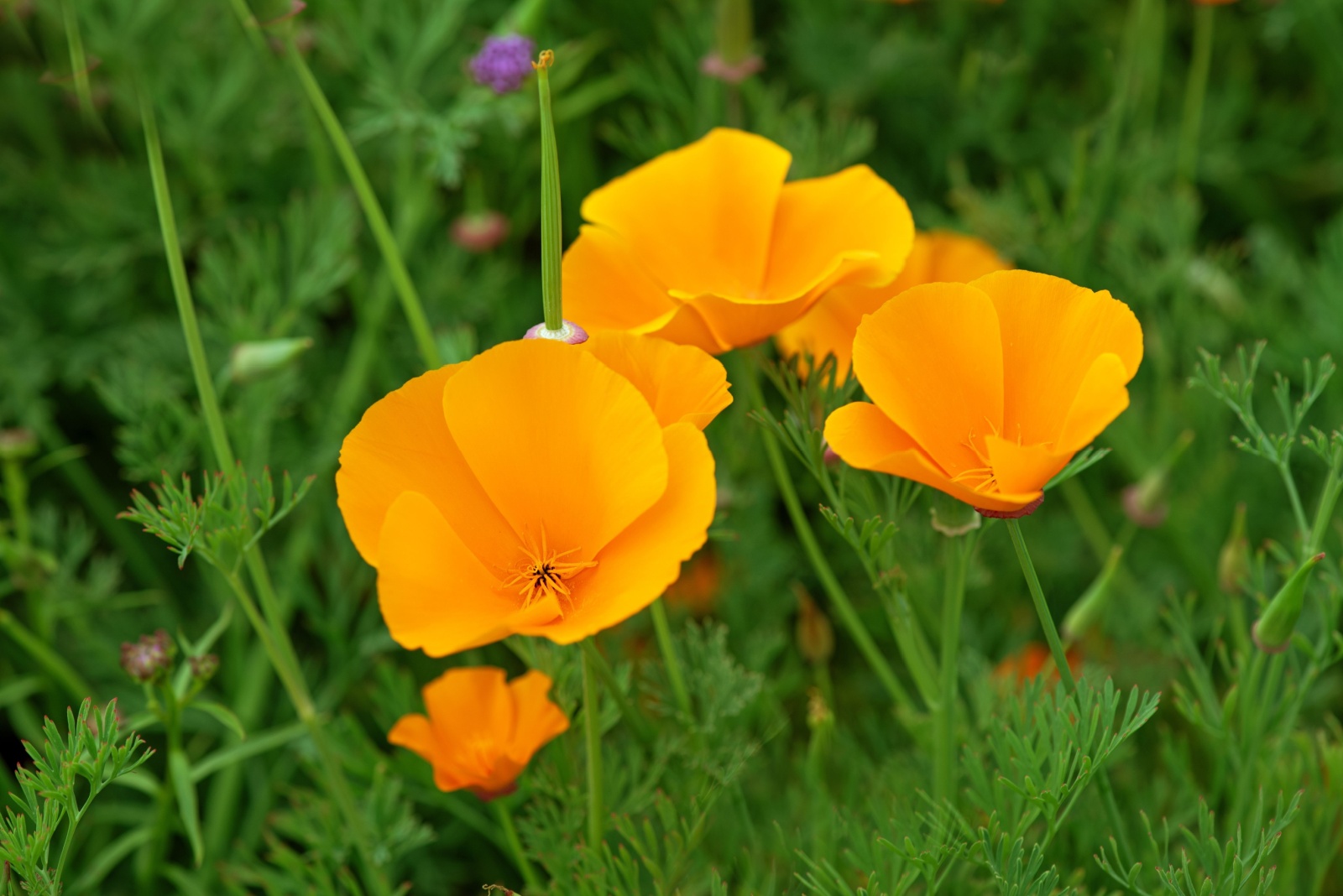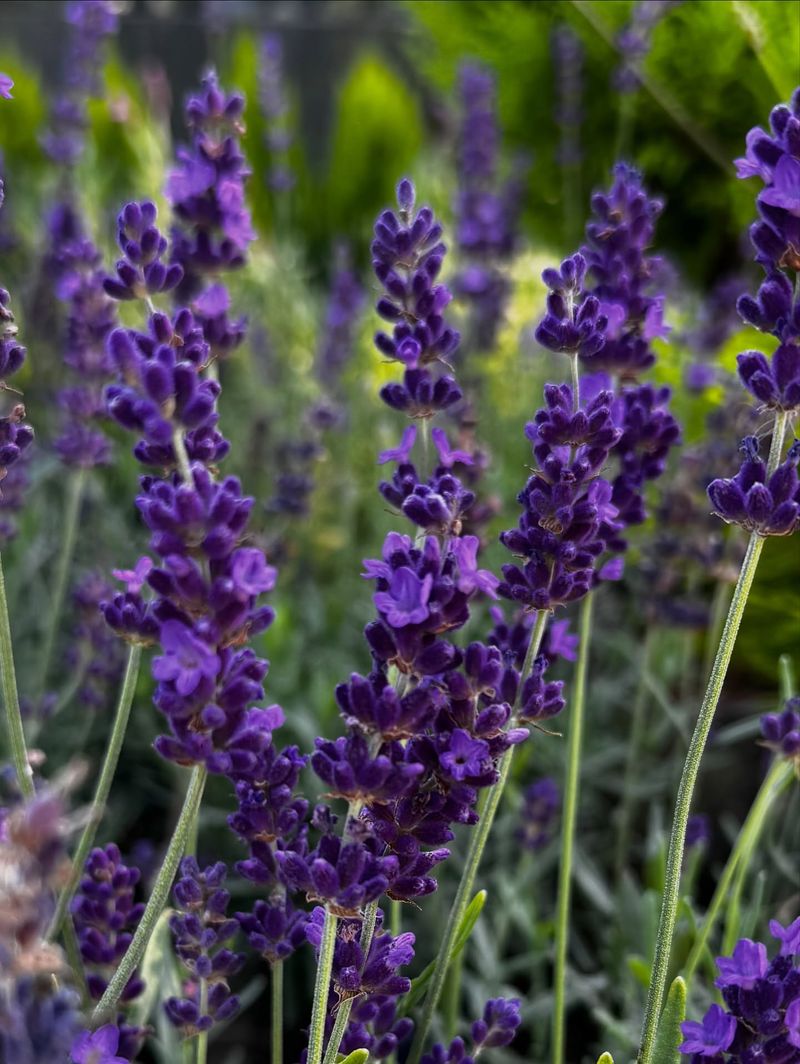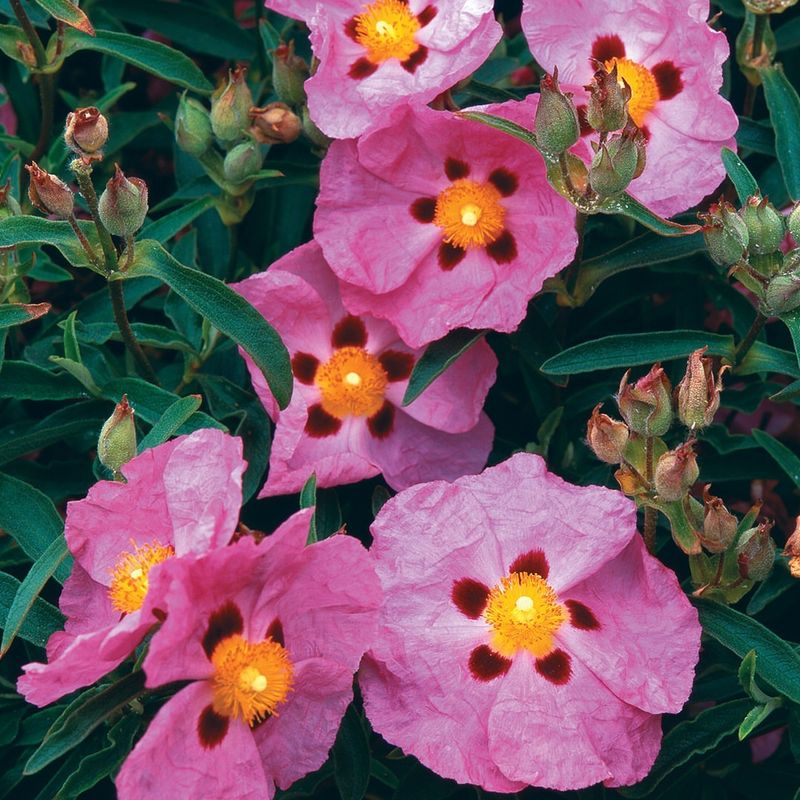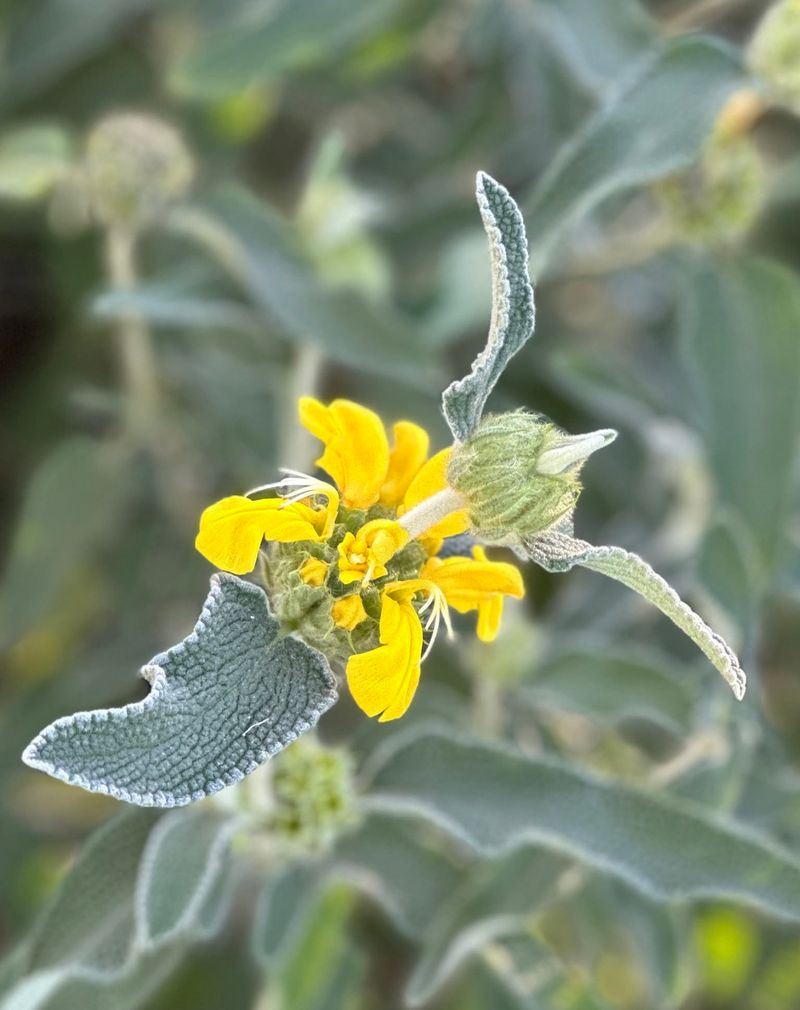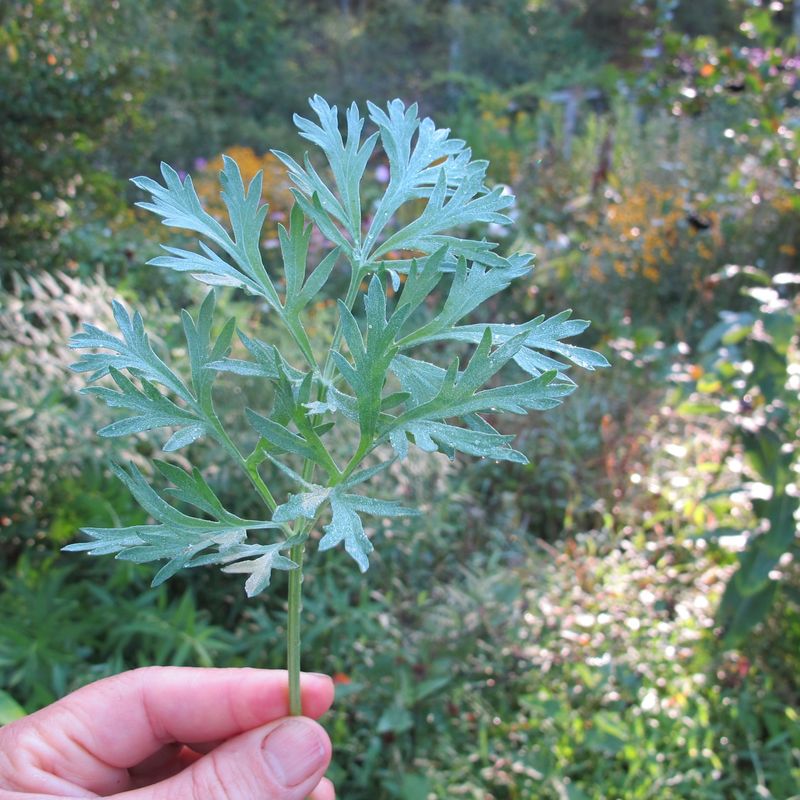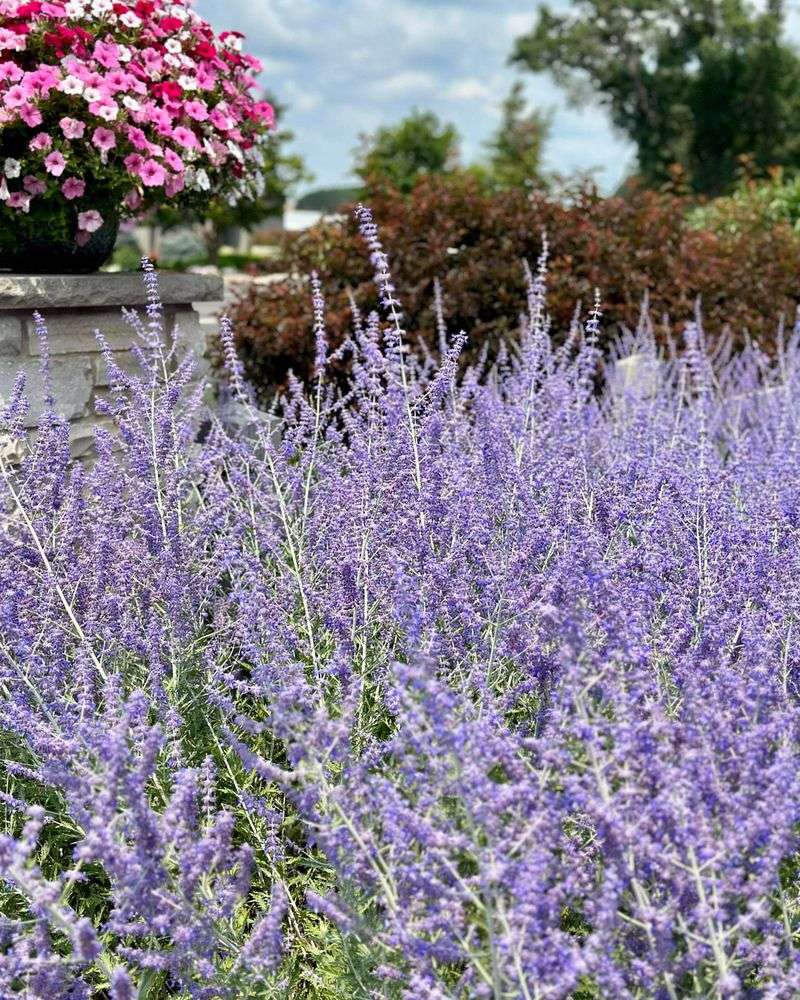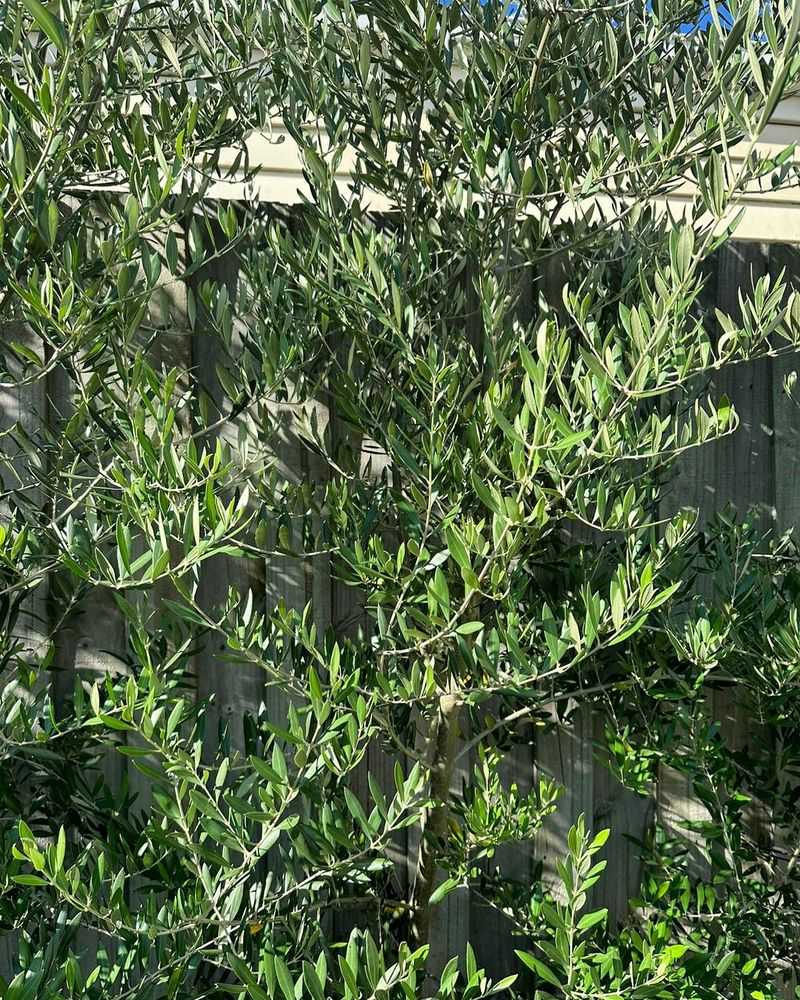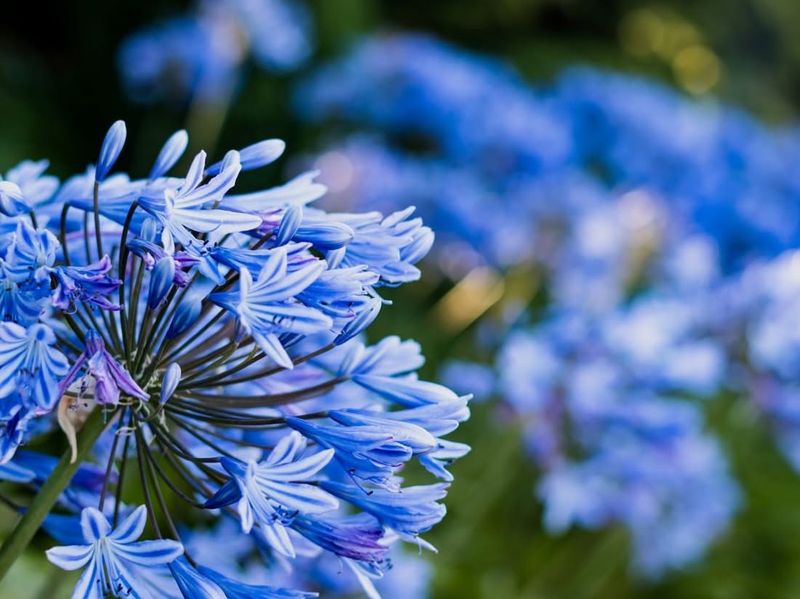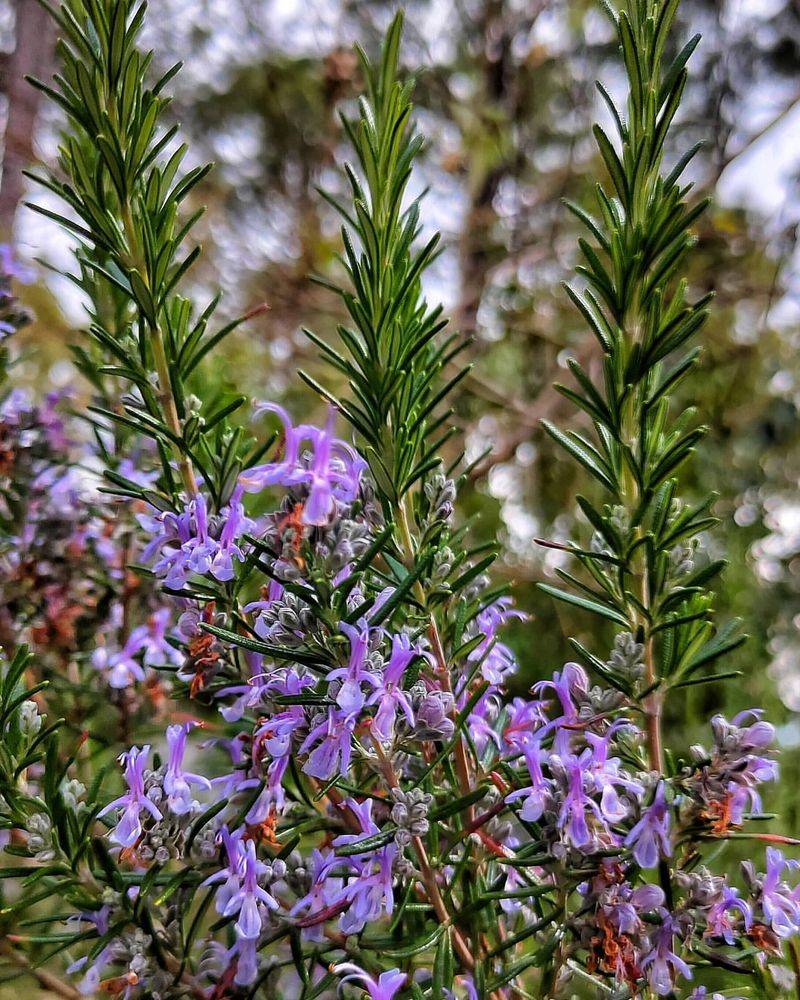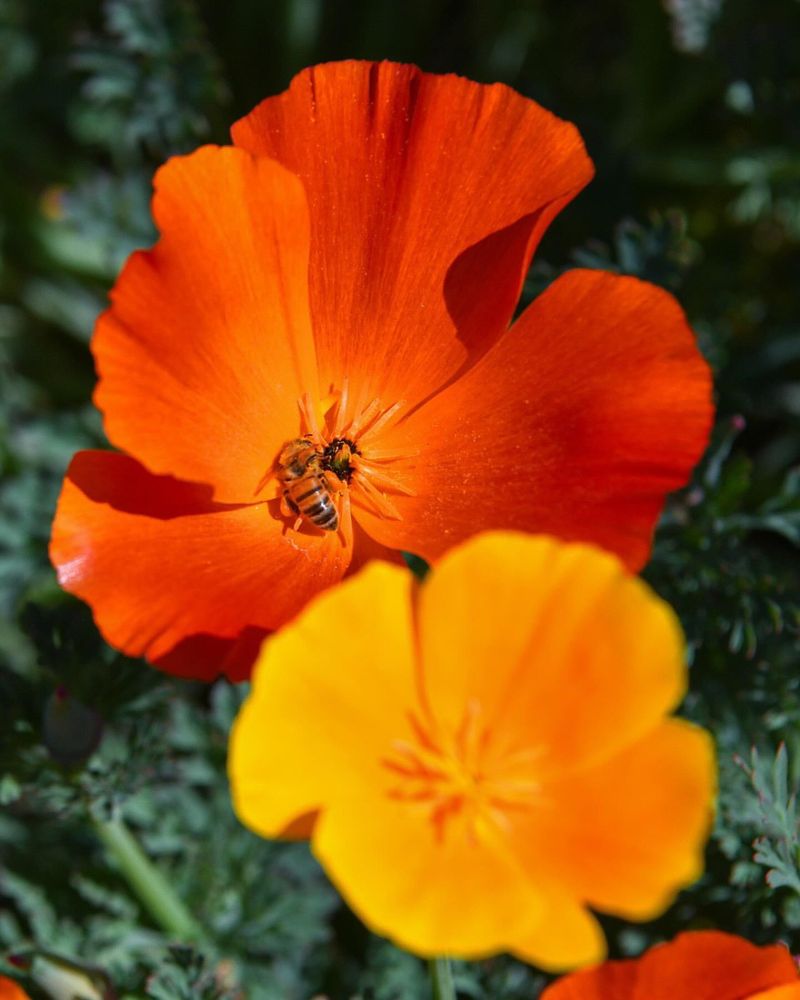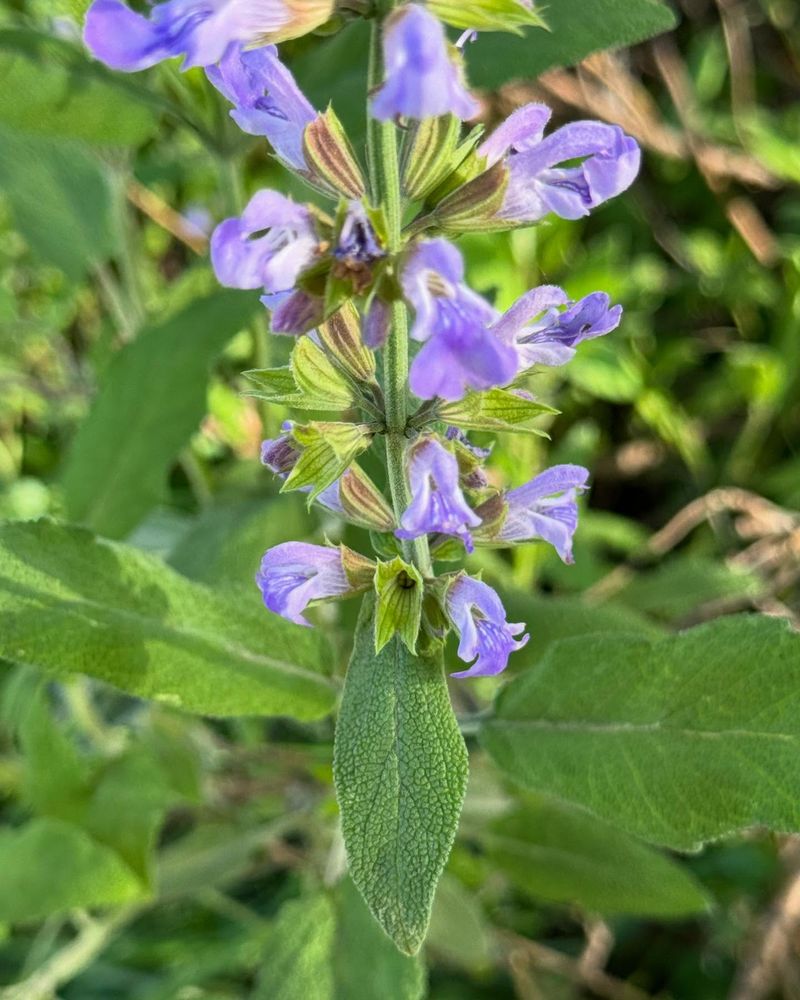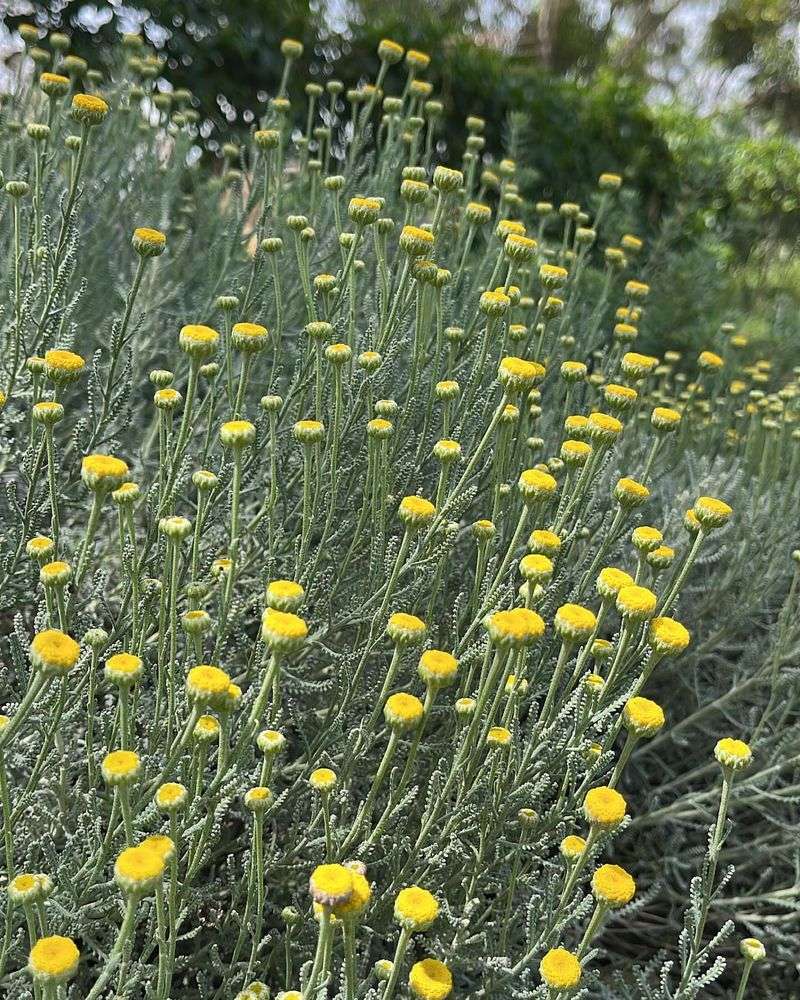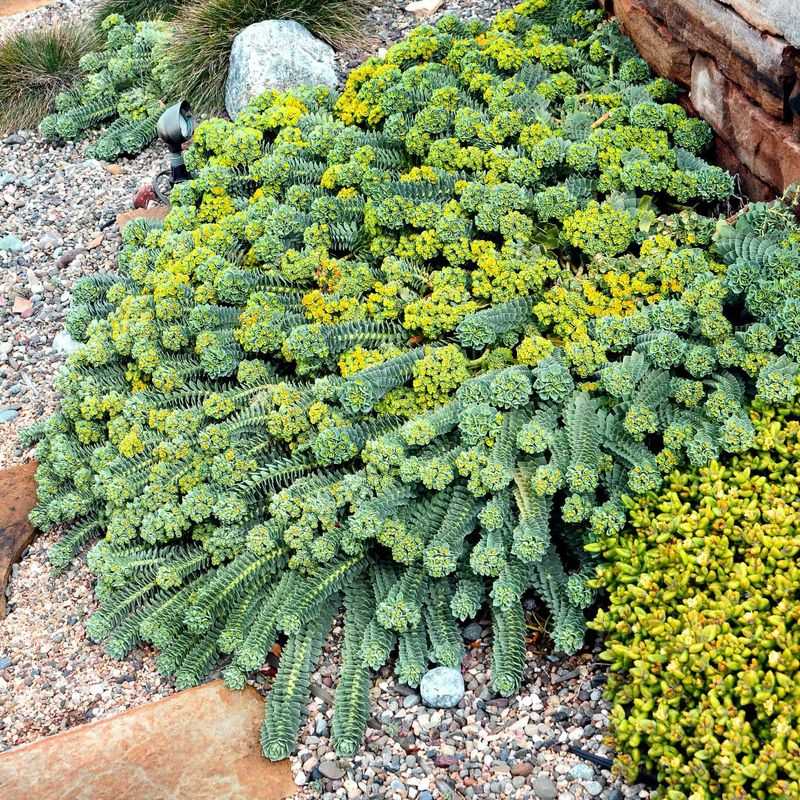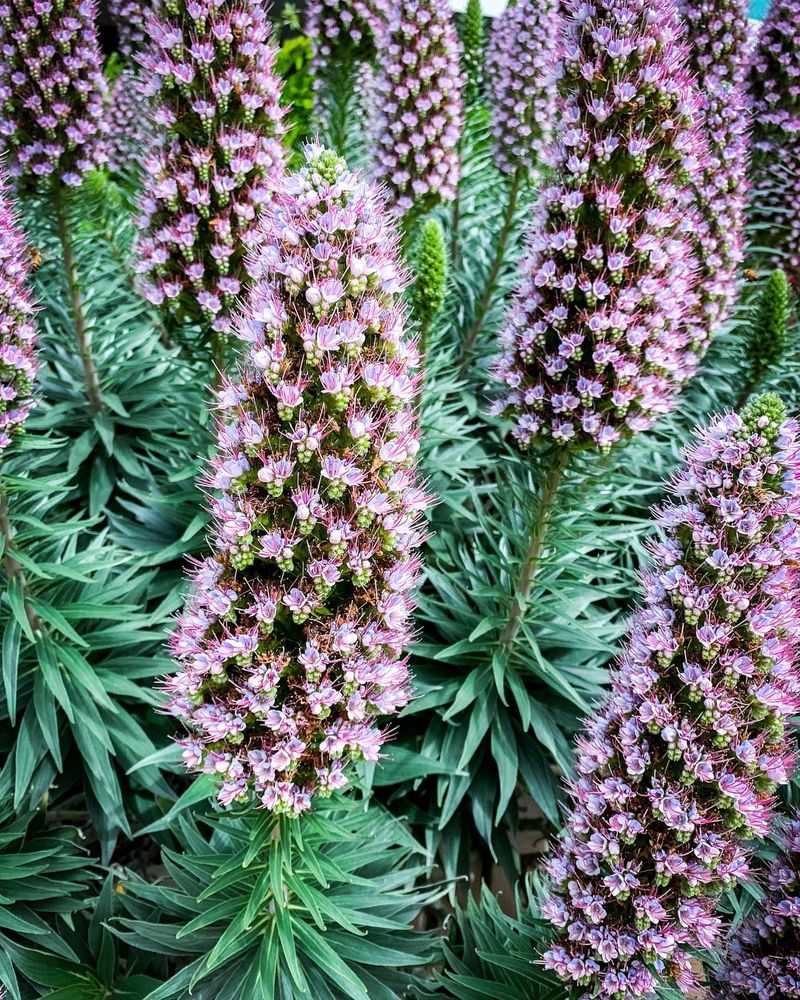California gardeners know the struggle of maintaining beautiful plants in our unique climate with water restrictions and hot summers.
Mediterranean perennials offer the perfect solution because they’ve naturally adapted to similar conditions found around the Mediterranean basin – dry summers, mild winters, and poor soils.
These tough plants not only survive but actually thrive when given minimal attention, rewarding hands-off gardeners with spectacular blooms year after year.
1. Lavender (Lavandula)
Lavender thrives in California’s sun-baked landscapes with almost zero maintenance. Too much attention – especially excess water or rich soil amendments – actually reduces flowering and can lead to root rot.
In my coastal garden, the lavender plants that receive the least fussing produce the most intensely fragrant blooms. Simply plant in well-draining soil, then step back and let nature take over.
Southern California gardeners particularly benefit from this Mediterranean native’s ability to withstand drought while still producing those signature purple spikes that attract beneficial pollinators all summer long.
2. Rock Rose (Cistus)
Covered in paper-like blooms each spring, rock roses demonstrate remarkable resilience in California gardens. Their grayish-green foliage stays attractive year-round, requiring absolutely no fertilizer or supplemental water once established.
My rock roses survived three years of extreme drought conditions while continuing to flower profusely each season. The key to their success? Being completely ignored after planting.
Native to rocky Mediterranean hillsides, these shrubs actually produce more abundant flowers when growing in poor soil without amendments or extra attention from well-meaning gardeners.
3. Jerusalem Sage (Phlomis fruticosa)
Striking whorls of golden yellow flowers rise above silvery foliage on this architectural standout. Jerusalem sage creates a dramatic presence in California gardens while asking for virtually nothing in return.
During six years in my Sacramento garden, I’ve never once fertilized or provided supplemental water to my established plants. The result? Increasingly impressive flowering displays each spring.
Pollinators flock to its unusual blooms, which appear in tiers along tall stalks. This Mediterranean native actually develops tougher, more attractive foliage when left to face challenging conditions without intervention.
4. Artemisia (Wormwood)
Silver-gray foliage creates a stunning backdrop for more colorful garden companions. Artemisia varieties like ‘Powis Castle’ and ‘Silver Mound’ thrive on neglect in California landscapes, developing more intense silver coloration when water is scarce.
The aromatic leaves deter deer and rabbits naturally. When I finally stopped trying to “help” my artemisia with extra water, it responded by doubling in size and developing a more compact, attractive form.
Many gardeners in Southern California report similar experiences – the less attention these Mediterranean natives receive, the more stunning they become.
5. Russian Sage (Perovskia atriplicifolia)
Cloud-like masses of tiny purple flowers hover above silver stems, creating a dreamy effect in California gardens from mid-summer through fall. Russian sage responds to neglect by producing more flowers and developing stronger stems.
After watching mine flop over from too much water, I learned to stand back and let it fend for itself. The transformation was remarkable – upright stems and twice as many flower spikes.
Especially suited to hot inland areas of California, this Mediterranean-climate plant develops deeper root systems when forced to seek out water, resulting in more drought resistance and better flowering each year.
6. Olive Trees (Olea europaea)
Ancient symbols of peace, olive trees have thrived for centuries in Mediterranean climates with minimal human intervention. Their silvery leaves and gnarled trunks add instant character to California landscapes.
My neighbor’s olive tree receives zero irrigation yet produces bumper crops of olives each year. The secret seems to be benign neglect – the tree develops deeper roots when forced to seek out water sources.
Even fruitless varieties like ‘Swan Hill’ and ‘Wilsonii’ develop more beautiful form and foliage when left to grow naturally without excessive pruning or watering in California gardens.
7. Agapanthus (Lily Of The Nile)
Bold blue or white flower clusters rise dramatically above strap-like foliage in summer. Despite their common name suggesting water needs, these South African natives match Mediterranean conditions perfectly and bloom best when left undisturbed.
Along California highways, you’ll spot masses thriving without any care at all. I’ve found the secret to abundant blooms is counterintuitive – the plants that receive less water and fertilizer produce more impressive flower stalks.
Coastal gardeners particularly benefit from agapanthus’ salt tolerance and ability to withstand foggy conditions while still producing those signature spherical blooms that last for weeks.
8. Rosemary (Rosmarinus officinalis)
Fragrant needle-like foliage and delicate blue flowers make rosemary both beautiful and useful in California gardens. This herb actually produces more aromatic oils and flowers when growing in poor soil with minimal water.
The oldest, most spectacular rosemary I’ve seen grows on a neglected hillside in Sonoma County. Left completely alone for decades, it’s transformed into a flowering shrub over six feet tall and wide.
Upright varieties like ‘Tuscan Blue’ and prostrate forms like ‘Prostratus’ all share this remarkable ability to thrive when ignored, making them perfect for busy California gardeners who still want beautiful, fragrant blooms.
9. California Poppy (Eschscholzia californica)
Our state flower exemplifies the beauty of benign neglect. California poppies reseed themselves freely when left undisturbed, creating spectacular orange drifts across gardens and landscapes each spring.
Attempts to pamper these natives with extra water or fertilizer actually reduce flowering and can lead to floppy growth. I’ve watched volunteer poppies outperform carefully tended ones year after year in my garden.
Beyond the classic golden-orange, newer varieties offer cream, yellow, and pink options. All share the same preference for being left alone to follow their natural cycle of bloom, seed-set, and dormancy through California’s Mediterranean seasons.
10. Salvia (Sage)
Mediterranean salvias create months of color with almost zero maintenance in California gardens. Varieties like ‘Hot Lips’ and ‘Allen Chickering’ actually produce more abundant blooms when water is restricted.
After accidentally neglecting my salvia bed during a three-week vacation, I returned to find it putting on the best flower display ever. The plants had developed deeper roots and tougher stems that supported more flower spikes.
Hummingbirds flock to these drought-resistant bloomers, especially in Southern California where they flower nearly year-round when left to follow their natural growth patterns without excessive pruning or watering.
11. Santolina (Lavender Cotton)
Button-like yellow flowers top perfectly round mounds of silver or green aromatic foliage. Santolina creates architectural interest in California gardens while requiring virtually no maintenance once established.
My santolina plants suffered from my well-intentioned watering until I finally learned to leave them alone. Now they form perfect silver domes covered with cheerful yellow buttons each summer.
Particularly effective in hot inland valleys where summer temperatures regularly exceed 100°F, these Mediterranean natives actually develop more compact, attractive forms when growing in poor soil without supplemental water or fertilizer.
12. Euphorbia (Spurge)
Architectural foliage and unusual chartreuse flower bracts make Mediterranean euphorbias standout performers in California gardens. Varieties like Euphorbia characias wulfenii create dramatic structure without asking for attention in return.
Gardeners often make the mistake of pampering these tough plants. When I stopped watering my euphorbias, they responded with more upright growth and twice as many flower heads the following spring.
The blue-gray foliage remains attractive year-round in most California climates, with the most intense coloration developing in plants that receive minimal irrigation and no fertilizer whatsoever.
13. Echium (Pride Of Madeira)
Towering purple-blue flower spikes create dramatic vertical interest in coastal California gardens. These Canary Island natives match our Mediterranean climate perfectly, blooming most impressively when left completely alone.
Along Highway 1, you’ll spot spectacular specimens growing in seemingly impossible conditions – clinging to cliffs with no soil amendments or irrigation. My own garden echiums struggled until I stopped trying to “improve” their growing conditions.
The secret seems to be tough love – poor soil and minimal water force these plants to develop extensive root systems that support massive flower spikes, sometimes reaching eight feet tall in mature specimens.

